Star trackers are basically small equatorial mounts made to hold cameras and telephoto lenses, or small telescopes, for long-exposure astrophotography. Star trackers offer a cheap, portable, and easy-to-use way to get into astrophotography and are great for those interested in just casual wide-field shots.
Star Trackers Vs. Equatorial Mounts
Star trackers are mechanically similar to equatorial mounts. However, equatorial mounts usually have dovetail saddles to interchangeably install telescope optical tubes, a much higher weight capacity, can always have a polar scope installed, and are supplied with tripods by default. They also have the ability to use autoguiding and have motors on both the declination and right ascension axes. Increasingly, even the cheapest star trackers are beginning to have these features provided by default, blurring the lines between low-capacity equatorial mounts and star trackers further.
Best Star Trackers for Astrophotography: Our Recommendations
Best Under $250: Omegon Mount MiniTrack LX3
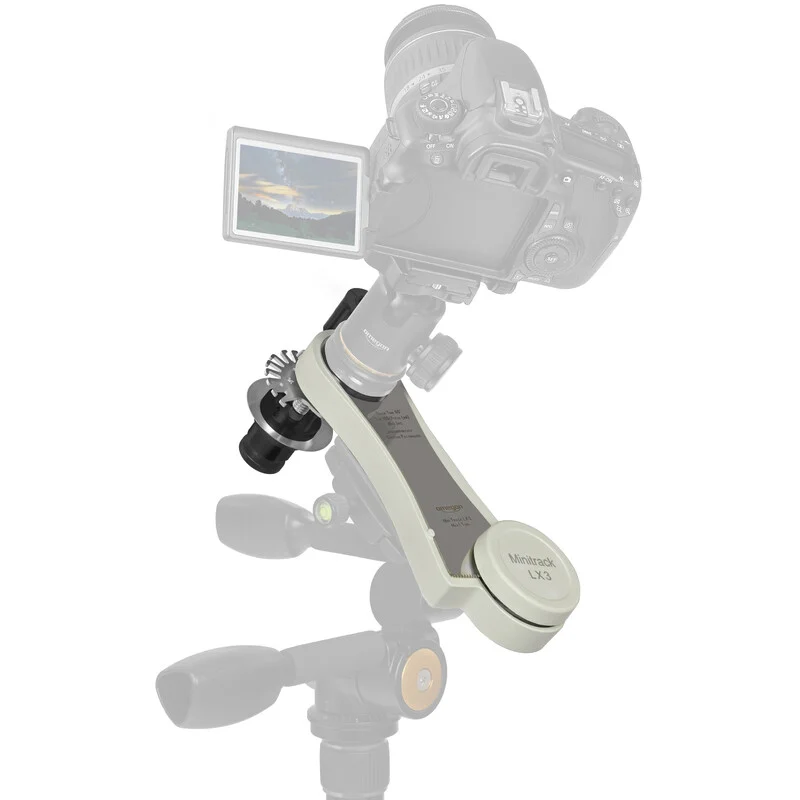
The Omegon MiniTrack LX3 is unique in that it doesn’t use any electronics at all. A true “clock driven” tracker, the MiniTrack is wound up by the user to track the sky. Thus, there’s no need to worry about batteries or a power supply at all. A polar scope is provided with the MiniTrack LX3 for alignment, and the MiniTrack LX3 works great with short focal length telephoto lenses (150mm or less) and exposures up to a minute. While advertised as being able to handle 300mm focal length lenses, the MiniTrack will struggle with such a heavy payload and precision required. Attaching a camera will require a ball head, and a tripod is not provided, however.
Best in $250-$300: iOptron SkyTracker Pro
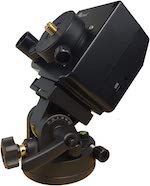
The SkyTracker Pro is a fairly inexpensive driven star tracker for astrophotography, with a latitude base provided for easy polar alignment, aided by the built-in polar scope. The SkyTracker Pro has a built-in rechargeable battery and the ability to install a counterweight shaft for heavy payloads; the SkyTracker Pro is really only suited for focal lengths up to around 150mm or so. The SkyTracker Pro will fit any suitable photo tripod but iOptron does sell a dedicated tripod for the task.
Best in $300-$400: iOptron SkyGuider Pro (#Best Value)
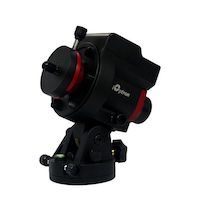
The SkyGuider Pro is essentially a beefier SkyTracker Pro. You might have seen one of these with a telescope mounted on top; the SkyGuider Pro features an autoguider port for guided astrophotography, a counterweight shaft, and a Vixen-style dovetail saddle by default so you can technically put a telescope on top. However, actually aiming a telescope on the SkyGuider Pro is annoying due to the lack of a driven declination axis (which also means guiding in declination is not possible). As such, we would recommend that you stick to telephoto lenses with the SkyGuider Pro, maybe 250mm or less in focal length, if you can help it. The SkyGuider Pro features a polar alignment scope and built-in battery like the SkyTracker but does need an aftermarket tripod, either from iOptron or a third party, to be used.
Best in $400-$500: Sky-Watcher Star Adventurer Mini Pro Pack
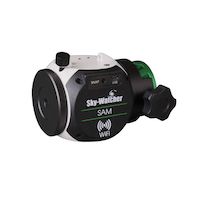
The Star Adventurer Mini can be bought for less a la carte, but we’d recommend just getting the Pro Pack with all of the parts you need to set it up. The Star Adventurer Mini is extremely lightweight and compact when dismantled, a lot more so than the iOptron star trackers. It can still handle lenses with up to a 150mm focal length or so easily. Power is provided by AA batteries inserted into the body or an external source via the Star Adventurer Mini’s USB port.
The mount is also controlled via your smartphone or tablet rather than buttons on the side which makes it much easier to set up and use. The Star Adventurer Mini Pro accepts a Vixen-style dovetail plate but comes with a bracket to attach a camera by default; there’s no need to go shopping for a ball head. A polar scope is also built into the Star Adventurer Mini and it features an illuminator. You will still need a tripod, of course.
Tip: This is often available on Amazon for a slightly discounted price.
Best in $500-$600: Sky-Watcher Star Adventurer 2i Pro Pack
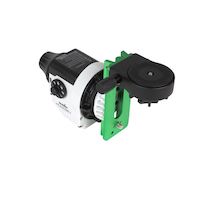
The Star Adventurer 2i has a higher payload capacity than the Star Adventurer Mini and includes a counterweight shaft for better balance and thus more accurate tracking with heavier payloads. Like the Mini, the Star Adventurer 2i Pro is powered by AA batteries or an external power source. The Star Adventurer 2i Pro is controlled via your phone or tablet like the Mini and will attach to any sturdy photo tripod.
You can use telephoto lenses with a focal length of up to 300mm or so on the Star Adventurer 2i Pro, and small telescopes up to 4” in aperture can be mounted atop it for visual astronomy with a suitable tripod; in addition to the unpowered declination axis, the Star Adventurer 2i Pro is lighter than the SkyGuider Pro and lacks autoguiding capabilities which make it even less suitable for use with an actual astrophotography telescope, even a small one.
Tip: This is often available on Amazon for a discounted price.
Best in $600-$800: Sky-Watcher Star Adventurer GTi (#The Best Choice)
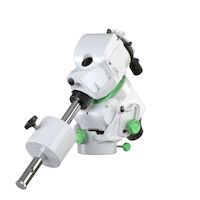
The Star Adventurer GTi is basically a true equatorial mount rather than a star tracker but serves many of the same needs. The Star Adventurer GTi is sold without or with a dedicated tripod, which we would recommend as it’s likely a better bargain than anything comparable you can buy yourself. The mount has motors on both the right ascension and declination axis with full motorized GoTo and tracking controlled via your smartphone and tablet, as well as the ability to push the mount around the sky manually without affecting GoTo accuracy and the mount’s knowledge of where it is aimed. A polar scope is provided by default, and autoguiding capabilities are built in; you can put a small refracting telescope or almost any telephoto lens on the Star Adventurer GTi without any problems. You also get a pier extension to put the view finder of your camera at a comfortable height if needed, though the mount is more stable if you don’t use it.
Best in $800-$1000: Sky-Watcher EQM-35i
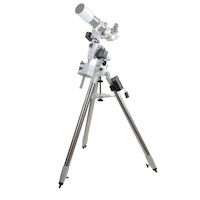
The Sky-Watcher EQM-35i is even heavier duty than the Star Adventurer GTi thanks to its beefy mount head and thick steel-legged tripod. You get a polar scope, autoguiding capability, tracking on both the right ascension declination axis, and can easily fit small telescopes on the mount without issue.
